Human Flower Project
On Seeing Flowers: Are You Missing Anything?
(Note: We’re honored to post this revelatory essay by two scholar/scientists in Louisiana. Jim and Renee, thank you for sharing some of your pioneering work here. People, as well as plants, need mentors, and you’ve become mentors to us.)
By James H. Wandersee and Renee M. Clary,
EarthScholars™ Research Group
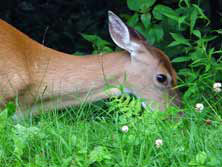 Photo: Hiking the Carolinas
Photo: Hiking the Carolinas
We don’t see with our eyes alone. The data our eyes generate undergo visual processing by our brains. Subsequently, only a small fraction of the total information our eyes detect is brought to our conscious attention. Given how the human visual system processes information, coupled with its learned “default values” for that processing, most people in developed nations tend to see plants as merely a green, blurry backdrop for the animals and human-made objects that populate their visual field.
Ask your friends what the picture above depicts and most will say “a deer” — even though there are at least a hundred times more plants than animals in that photo.
Ask them if they ever consciously pay attention, as they watch the game, to the millions of living grass plants upon which their favorite football team plays. Using an established turfgrass density rate, [850 grass plants per square foot] x [9 sq. ft. per sq. yd.] x [5,300 sq. yds. per football field], there are at least 40.5 MILLION grass plants growing between the two goal lines.
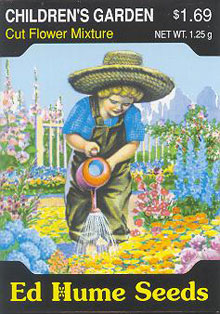 Image: Hume Seeds
Image: Hume Seeds
It is also true that the more recent generations of people living in developed nations have spent less time outdoors in nature than previous generations, thus increasing their estrangement from the Plant Kingdom. We tend to pay attention to things with which we are familiar, things we understand, and things that are important to us. Nationwide research studies conducted by us at Louisiana State University on plant blindness have shown that it is only through botanical education, plant mentorship, and direct experience that plants become salient, meaningful, and valued by the US citizenry.
Research by Tunnicliffe at Cambridge University has revealed that UK children typically have a much narrower meaning for the word plant than botanists do. They use the term “plant” to mean a flowering plant, and the term “flower” to represent an entire plant—but they apply it only to the plants that have bright and conspicuous flowers. They don’t, for example, consider most trees to be plants, nor are weeds deemed plants by them. Other science education researchers have demonstrated that many of these childhood misconceptions persist even into adulthood, and are not limited to the UK.
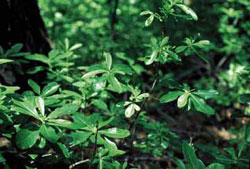 To the plant scientist, a flower is a reproductive organ that developed from a modified leaf. Botanically, a flower is a plant structure that may or may not be aesthetically pleasing, depending upon its natural pollination regime. If it is wind-pollinated, such as most trees and grasses are, its flowers may be rather small, drab, and inconspicuous. If it requires animal pollinators, it often exhibits dramatic visual or olfactory advertisements, complex floral structures, and various synthesized substances as rewards to attract them.
To the plant scientist, a flower is a reproductive organ that developed from a modified leaf. Botanically, a flower is a plant structure that may or may not be aesthetically pleasing, depending upon its natural pollination regime. If it is wind-pollinated, such as most trees and grasses are, its flowers may be rather small, drab, and inconspicuous. If it requires animal pollinators, it often exhibits dramatic visual or olfactory advertisements, complex floral structures, and various synthesized substances as rewards to attract them.
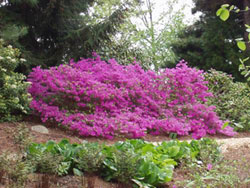
Consider the azalea (at right). When it is not in bloom, this plant is a rather bland piece of shrubbery, easily overlooked as you pass by it. When it is in need of pollination and ready for full bloom, it “switches on” its colorful visual advertisements and almost everyone is instantly aware of its presence. (Photos: Not in bloom, Dept. of Horticulture, Cornell University; blooming, San Diego State University)
Flowering plants make up about 90% of the Plant Kingdom. Over 250,000 species have already been described. They appeared on Earth after the other seed plants, which date back to the Devonian Period. Thanks to recent work by plant biologists at the Salk Institute, we now understand, genetically, how floral structure develops and why flowers last for only a short time, while leaves and branches last much longer.
The fossil record tells us that flowers appeared long before humans, while dinosaurs still roamed the Earth. During the past 140 million years, flowering plants have colonized nearly every available habitat on Earth. In his day, Darwin called their origin “an abominable mystery.” Harvard University biologists have recently found genetic evidence to back a claim that one of the first flowering plants may have been Amborella, a rather ordinary New Caledonian shrub with tiny flowers. The Water Lily was also shown by these researchers to be a rival candidate for first flowering plant.
Note how useful paleontology and genetics are in unraveling questions of plant evolution. Our own EarthScholars™ Research Group seeks to integrate biological and geological knowledge for greater public understanding of science. One of us is a botanist and the other is a geologist. Together, we are much like Charles Darwin, whose mindset was able to shift between biology to geology, consciously attempting to integrate those two domains. In contrast to Darwin though, our own efforts have focused on improving our nation’s geobiological understanding—via visual, historical, and field-based learning approaches. Much of our research has been conducted in fossil parks, petrified forests, and arboreta.
A geologist can look at a fossilized flower that s/he has collected and see specific geological processes at work, note environmental indicators, analyze associated pollen data, examine related strata, and piece together numerous discrete sources of information gathered in the field to allow the fossil to “speak.” Geologists exude an appreciation for earth history and the history of life. Paleobotanist William Crepet of Cornell University, writing in Natural History magazine, reported that a recently discovered ancient marsh site in New Jersey contains over 200 species of fossilized flowers—many more than have been found anywhere else on Earth. They have been dated to be about 90 million years old (Late Cretaceous Period). While Crepet noted that these fossils have lost any bouquet appeal that they may once have had, they are beautiful in other ways. We can view them as they are preserved, in three dimensions, and as precursors of modern-day flowering plants—complete with petals, pollen grains, ovules, with many of their associated insect pollinators preserved as well. The latter data support the hypothesis that insects served as the driver of floral diversity, leading to many new plant species.
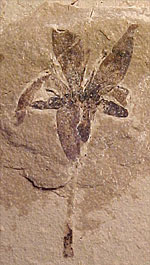 A fossilized flower
A fossilized flower
Photo: NASA Astrobiology Institute
So, have you seen a flower…truly seen a flower? Have you studied the plant when its flowers have fallen and it is not in bloom? Have you raised it from seed and met its requirements for growth and flowering? Have you noted its similarities and differences with respect to the other flowers that you know? Have you identified it accurately by its suite of characteristics? Can you name its parts properly? Have you viewed that flower through the lenses of its structure, its foliage and stem, its floricultural history, its environmental stresses, its pollinators, your prior knowledge about it, its sociocultural significance, its evolutionary pathway, and its changes across geologic time? Have you compensated for the biases of your own visual observation system?
Maybe what you have really done up to now is akin to just glancing. Perhaps it might take each of us an entire lifetime to really SEE a flower.
(From “The Most Beautiful Flower” by Cheryl L. Costello-Forshey)
…I heard my voice quiver; tears shone in the sun
As I thanked him for picking the very best one.
Through the eyes of a blind child, at last I could see
The problem was not with the world; the problem was me.
And for all of those times I myself had been blind,
I vowed to see the beauty in life,
And appreciate every second that’s mine.
And then I held that wilted flower up to my nose
and breathed in the fragrance of a beautiful rose.
And smiled as I watched that young boy,
Another weed in his hand,
About to change the life of an unsuspecting old man.

